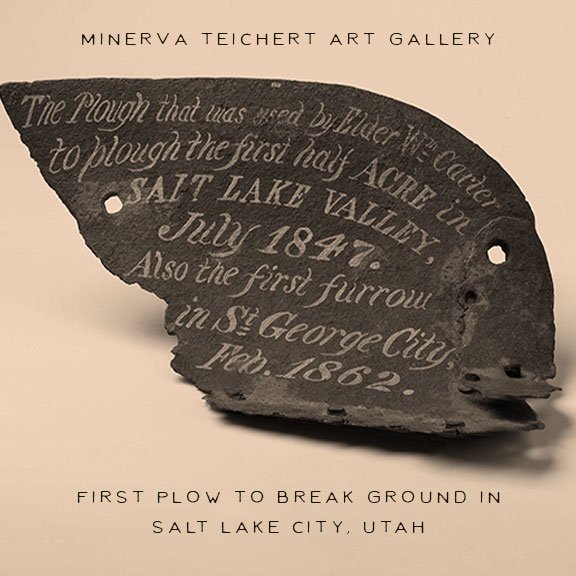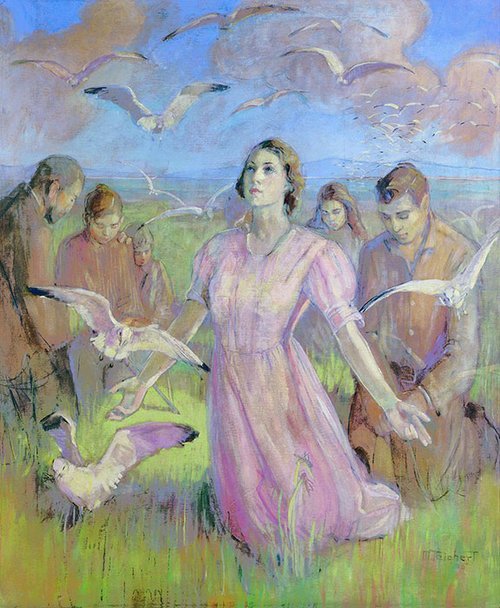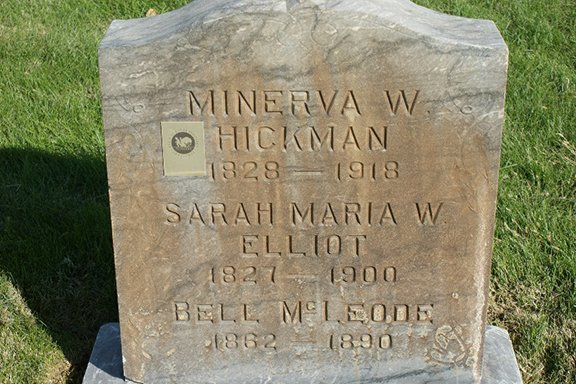First Plow by Minerva Teichert (c. 1938)
This is one of several Minerva Teichert paintings that marks an event in the Salt Lake Valley that made the early Latter-day Saint pioneers proud. It shows the pioneers planting crops in the newly settled Salt Lake Valley in July of 1847. Minerva’s scene shows the Mormon Pioneers working together toward their common goals - and a sense of excitement and anticipation in breaking ground for the first time at their new home.
More About First Plow
Among the first settlers of the Salt Lake valley was Minerva Teichert’s family. The Hickmans and Kohlhepp families came into the valley with the handcarts from Nauvoo, Illinois. They were witnesses to many of the ‘firsts’ of the early Latter-day Saint life in Utah. Teichert’s Grandmother, Minerva Wade Hickman would tell these stories to young Minerva about the many miracles and special moments of those early years. Minerva Hickman was there in July 1847 the morning the first plow broke ground in an almost entire valley of salty sand and dirt. “I could almost hear music, a song of triumph” she later wrote in her journal regarding that morning. Hickman was not only present at the “First Plow” but she was also there when the crops were planted - and then as the harvest drew close and the crickets began to feast on the first fruits of their labors. Minerva Teichert spoke often about her grandmother’s story of kneeling with all the other pioneers in prayer - begging heaven to intercede. She was there to witness with her own eyes the seagulls swooping in the eat the crickets and save the crops. This is perhaps why, Minerva Teichert painted both the scene of the first plow and the miracle of the gulls.
More About Minerva Teichert
Minerva Teichert was an artist whose works ranged from western American subjects to many religious paintings primarily depicting the history of the Latter-day Saint movement. This includes Minerva’s several works requested by the Church that were used to illustrate the stories using Book of Mormon art. She is also well known for the many murals she painted in public and private buildings scattered throughout Wyoming, Idaho and Utah. She was born Minerva Kohlhepp in 1888 in North Ogden, Utah. Minerva was the second of ten children and spent most of the first half of her life doing just as much farm work as she did painting. She studied under famous artists like Robert Henri at the Art Institute of Chicago and Art Students League of New York. When she was 29 years old, Minerva Kohlhepp married Herman Teichert on September 15, 1917. However, only one year after their wedding, World War One broke out and Herman left for battle. Although Minerva traveled with Herman throughout his boot camp training and transfers, she was eventually forced to bid farewell and stayed at home with their new born baby son. During the early years of their marriage, everything was in short supply because of the war, so Minerva Teichert would paint on scraps of wood and paper because there simply wasn’t enough money to buy art supplies. Fortunately, Herman returned home after the war and the couple went on to have four more children. Minerva and Herman spent most of their lives on a ranch in Cokeville, Wyoming. Much of Minerva Teichert art can also be found by searching for LDS art, LDS church pictures, and Mormon art; even though these are not official names of the Church of Jesus Christ of Latter-day Saints.










